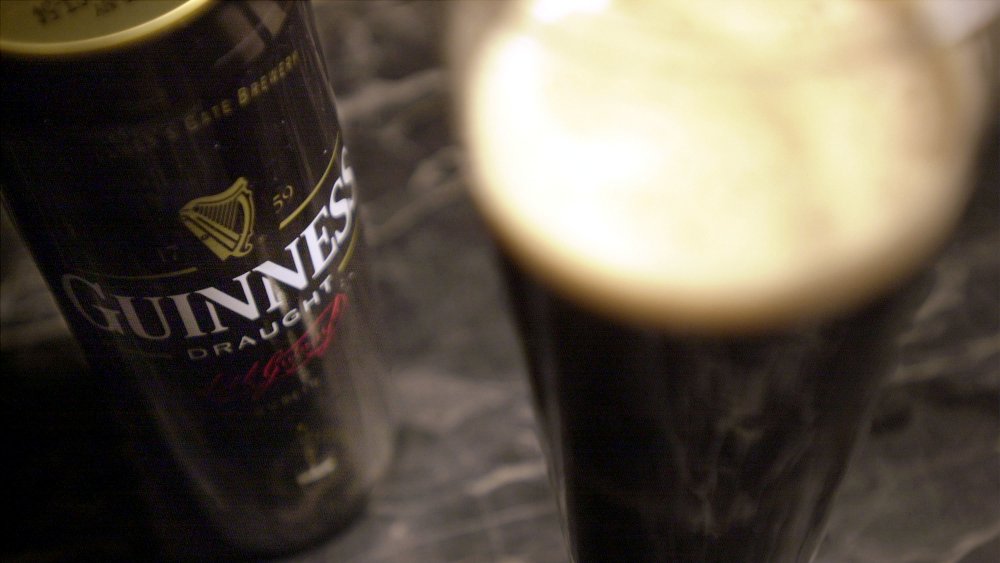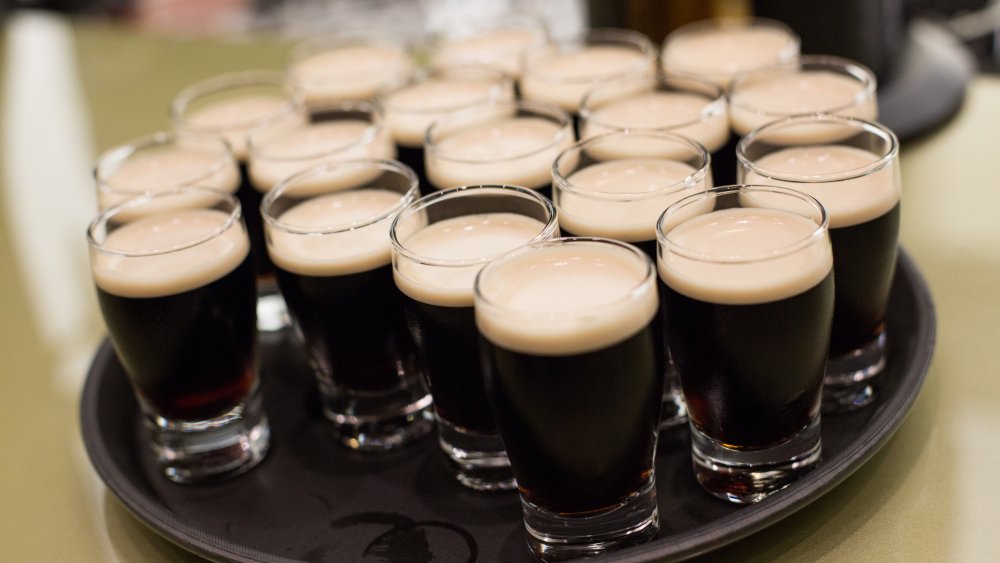The Real Reason There's A Plastic Ball In Your Can Of Guinness
In the vast majority of beer cans, there's just one thing inside the can: beer. Guinness, on the other hand, contains two: a smooth and creamy Irish stout and a widget.
What's a widget, you ask? It's not just a software term — it's the word that Guinness uses for the plastic ball that the Irish brewery includes in the canned version of its widely beloved beverage (via Business Insider). Though Guinness has been brewed in Dublin since 1759 (via Guinness), it wasn't until the late 20th century and the advent of aluminum cans for distributing beverages that the widget was introduced.
Although the company patented the device in 1969, it wasn't actually utilized for 20 years — it was first added to cans in 1989. The little ball is filled with nitrogen, which surges out of its plastic container when the can is popped and infuses the beer with nitrogen, providing the drinker with a mouthfeel akin to the one they would experience in a pub while drinking Guinness from the tap (via Guinness).
The funciton of the widget
Draft Guinness is also given its bubbles by the use of nitrogen as opposed to carbon dioxide, which is used to carbonate most beers (hence the word "carbonate"). Nitrogen bubbles are smaller than those of carbon dioxide, which results in a more delicate and smooth drinking experience. The use of nitrogen also gives Guinness its trademark foamy head, which lingers in the glass because nitrogen doesn't dissolve in air.
The widget wasn't always a success, however. WIth the first generation of the widget, depending on the temperature, the can was liable to foam over because the nitrogen was overly pressurized. In 1997, the brewery revamped its design and created in a new prototype that it dubbed "The Smoothifier." Guinness was a bit of a trailblazer in this respect — the popularity of the widget has spread to other similar styles of beer such as Murphy's Stout, Young's Double Chocolate Stout, and Boddingtons Pub Ale.

